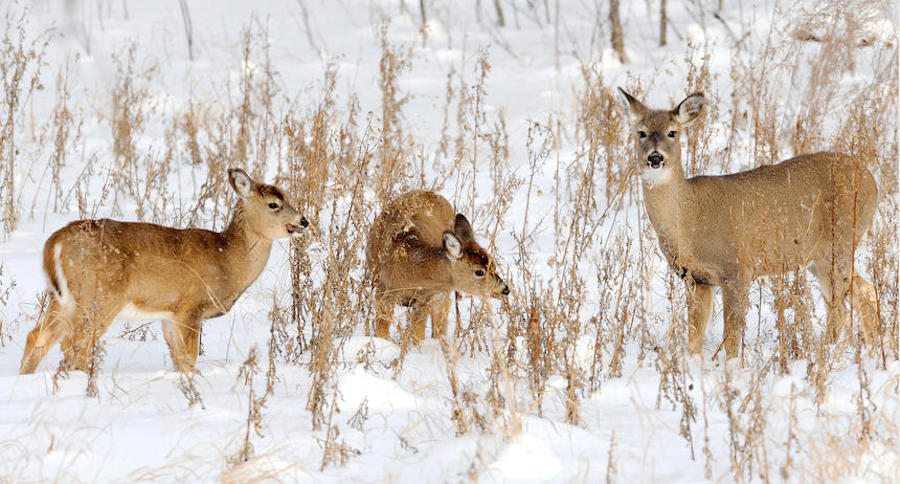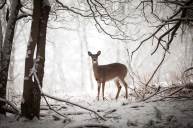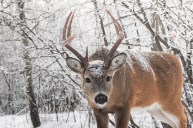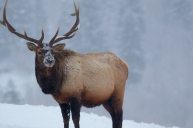It looks like North Dakota is going to be in for a cold winter. Unfortunately, that means the weather might take a frightful winter toll on the wildlife.
North Dakota wildlife officials are concerned that the game animal populations in the state are going to suffer during a brutal winter that appears to have lots of cold and snow still left to come.
So far Devil's Lake, Bismarck, and Minot all have received upwards of a foot of snow in recent days. Combine that with storms earlier this year and you've got a lot of snow already on the ground and January is just beginning.
According to Terry Steinwand, director of the North Dakota Game and Fish Department in Bismarck:
We're close to being on pace with the winters of 1996-97 and 2008-09, and when you mention those two years, I just cringe because they were bad for wildlife...Depredation isn't as bad as I thought it would be yet, but this week is supposed to be bitterly cold—20 to 30 (below), somewhere in there. If deer haven't congregated yet, they're going to in the next couple of weeks.
Farmers in Garrison, North Dakota are already reporting complaints of moose getting into bags of stored grain. If the weather continues on this track, deer could start congregating in farmyards to escape deep snow and raid feed stores.
Young deer are especially vulnerable to extreme conditions and it's likely this year's fawns are really going to suffer through the winter. However, even mature deer raiding cattle feed can cause a unique set of problems when they die from grain overload.
If you see deer starting to congregate around farms, let the North Dakota Game & Fish Department know right away so they can deploy some of their non-lethal measures to deter deer. If enacted early enough, these measures can actually be quite effective, thus saving farmers from having their grain eaten and saving the deer from dying of grain overload.
The severe winter conditions are also bad news for pheasants, which struggle in deep snow conditions.
The biggest thing North Dakota residents can do to help the wildlife this winter is to stay clear of wildlife and game habitat on their snowmobiles. Driving snowmobiles in the vicinity of wildlife habitat like thickets may scare and scatter wildlife, causing them to waste vital energy during the cold winter months where food is scarce.
This year's snowy conditions are actually good news for biologists in one way though: it actually will facilitate the state's first aerial deer survey in four years. A thick blanket of snow makes it much easier to spot and count deer from the air and these surveys are key tools for setting deer tag quotas in the state.
Like what you see here? You can read more great hunting articles by John McAdams on his hunting blog. Follow him on Facebook The Big Game Hunting Blog or Twitter @TheBigGameHunt.
NEXT: THE 7 WORST PLACES FOR DEER HUNTING IN THE UNITED STATES




